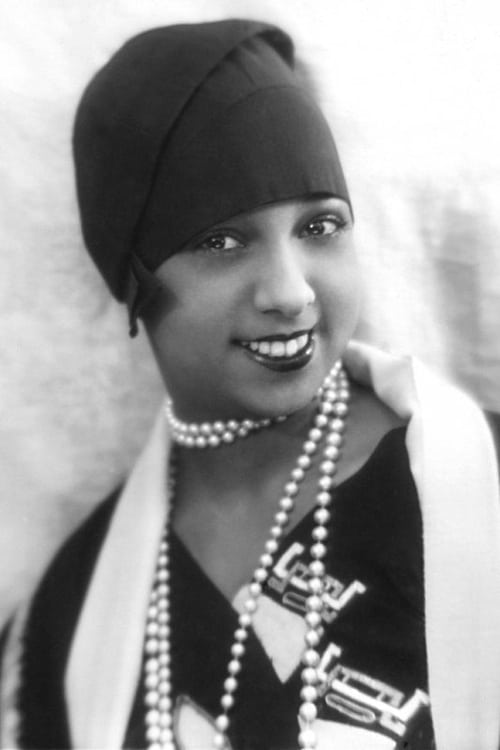Josephine Baker
Birth : 1906-06-03, St. Louis, Missouri, USA
Death : 1975-04-12
History
Josephine Baker (born Freda Josephine McDonald, naturalised French Joséphine Baker; 3 June 1906 – 12 April 1975) was an American-born French entertainer, activist, and French Resistance agent. Her career was centered primarily in Europe, mostly in her adopted France. During her early career she was renowned as a dancer, and was among the most celebrated performers to headline the revues of the Folies Bergère in Paris. Her performance in the revue Un vent de folie in 1927 caused a sensation in Paris. Her costume, consisting of only a girdle of artificial bananas, became her most iconic image and a symbol of the Jazz Age and the 1920s.

(archive footage)
Madness Remixed explores the image of exoticism portrayed by Josephine Baker in a 1926 performance entitled The Madness of the Day in which Baker wore the infamous skirt, made of only bananas, that played into stereotypes of Black women as hyper-sexualised. Madness Remixed questions the conditions under which the skirt should be revived, considering that Beyonce, Miley Cyrus, and Diana Ross have all worn the same skirt more recently. 16mm film coated with latex and glitter – a fetishised medium in itself – is data-moshed with Baker in Siren of the Tropics (1927).

Self (archive footage)
Josephine Baker, heedless of danger - The extraordinary destiny of Josephine Baker. From her native Missouri to Paris, the artist succeeded in making her name as the queen of music hall. But Josephine Baker was also a fighter, with the French Resistance during the Second World War, and against racism.
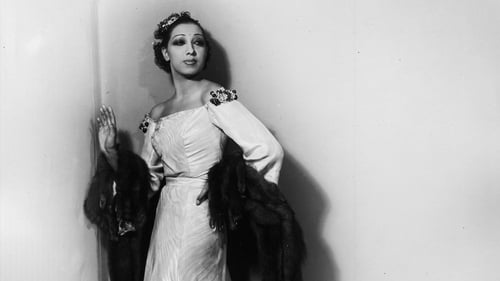
Self (archive footage)
How did a poor little black girl from Missouri become the Queen of Paris, before joining the French Resistance and finally creating her dream family “The Rainbow Tribe”, adopting twelve children from four corners of the world? This is the fabulous story of the first black superstar, Josephine Baker.

Self (archival footage)
Do I Look Like a Lady? (Comedians and Singers) presents a dynamic checkerboard of moving image footage featuring African-American actors and singers from across the 20th century: from Jackie “Moms” Mabley to Eartha Kitt, Whoopi Goldberg, Whitney Houston, and several others. The video focuses on their individual voices as they express heartbreaking roles, pointed lyrics, sharp jokes, and strong statements of resistance to the dominant culture. The work is a powerful, and often riotous, reflection on the roles of black women in the United States.

A storm of Modernism swept through the art worlds of the West in the early decades of the twentieth century, uprooting centuries of tradition. The epicenter of this storm was Paris, France. For an incandescent moment from 1905 to 1930, Paris was the magnetic center for radical innovation and experiment, and the Mecca for creative talents who would change the course of art throughout the Western world.

Herself (archive footage)
The newsreel series Jornal Português (1938-1951) was produced for the Secretariat of National Propaganda (SPN/SNI) by the "Portuguese Newsreel Society" (SPAC), under the technical supervision of António Lopes Ribeiro. It was conceived and employed as part of the propaganda machinery of Salazar's regime. Screened in cinema theatres prior to the main feature film, each issue of Jornal had approximately ten minutes in length and covered a variety of official government acts, national political news, major sports events and other assorted social and cultural affairs. Jornal Português is not only an indispensable document for the history of Estado Novo's propaganda, but also an unparalleled audiovisual archive of 1940s Portugal.

Herself

Herself (archive footage)
Performances of the greatest exotic dancers are collected here for the first time, from Little Egypt in 1893 to the great striptease headliners of the golden age of Burlesque.

Self (archive footage)
A star-studded tribute (from the creators of That's Entertainment) to the contributions of Afro-Americans in film over the last century. Vanessa Williams traces the struggles and triumphs of the superstars of music and film. Among the many artists featured are: Whitney Houston, Ella Fitzgerald, Sammy Davis Jr., Diana Ross, Michael Jackson, Cab Calloway, Bill "Bojangles" Robinson, Ella Fitzgerald, and Little Richard, Also included are today's contemporary superstars: Snoop Dogg, Ice T, Quincy Jones, Spike Lee, Russell Simmons, and many, more! 80 minutes plus DVD bonus features.

Herself (archival footage)
From world-renowned performer of the Jazz Age, to WWII spy, to civil rights activist – a look into the iconic life and legacy of Josephine Baker, narrated by Arsenio Hall, including rare archive footage, and interviews with Debbie Allen, Lynn Whitfield (who portrayed Baker in The Josephine Baker Story), and two of Baker’s sons.

Self (Archival Footage)
The story of Josephine Baker takes us on a fascinating tour of 20th-century race relations on both sides of the Atlantic, yet it leads to no conclusion, and black girls in search of a role-model tend to look elsewhere. Part of her appeal is her startlingly unique appearance. Simply nobody has ever looked or acted like her. She fits no black stereotype. Nor does she look like any recognizable strain of Afro-American. I'd always heard she was half-white, but it seems that her paternity is unknown, and her contradictory claims on the subject don't do much to enlighten us. (We are tempted to imagine quite an exotic mix.) Her origins in sharply-segregated St. Louis, where she is said to have witnessed a lynching, do not seem to have left her embittered. Perhaps she had too much to give. There is a special innocence about that smile, and when she performs her cross-eyed gag, we are lifted into a strange pixie-world, all its own.

Self (archive footage)
Ossie Davis narrates a history of "race films," films made before 1950 which catered to a primarily black audience.

A painter gives his daughter a television set for her 18th birthday. On the evening of the party, the family sits in the living room and watches a series of variety shows taken from the sets of theatrical performances and various films recited by the famous Totò,

Sängerin

Zazu Clarion
Cabaret star Zazu intervenes when young lovers are sundered by their parents' feud.

A poor wretch, who has just been hired as a music-hall artist, in spite of himself becomes the tenant of a particular Parisian building.
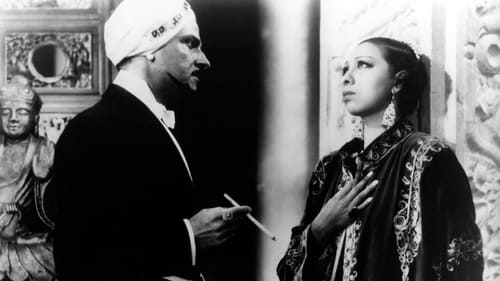
Alwina
A French novelist passes off an African shepherdess as a princess.
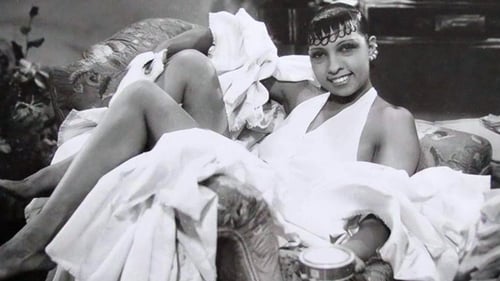
Zouzou
Zou Zou tries to help her childhood friend prove his innocence after he's accused of murder.

After a lengthy period of watching the dancers at the Folies Bergères, a fireman stops in for a drink. As he becomes intoxicated, his thoughts return to the dancers, and he begins to see images of nude dancers all around him. Whether he goes into the subway, rides on a streetcar, or returns to the fire station, he continues to see the same imaginary sights.
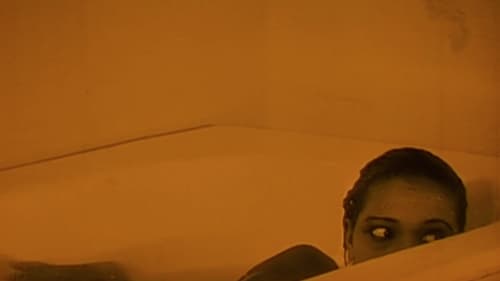
Papitou
Marquis Sévéro, a rich, lazy Parisian, wants to divorce his wife so that he can marry his own goddaughter Denise. But Denise herself loves André Berval, an engineer employed by the marquis. Filled with jealousy, the marquis sends André to the Antilles, to prospect some land he has just acquired. He promises André that he can marry Denise if he is successful in the tropics, but he then writes to Alvarez, his manager at the site, asking him to prevent André from ever returning to France. The brutal Alvarez forms an instant hatred for André when the engineer breaks up Alvarez's attempt to rape Papitou, a beautiful native girl. Papitou becomes devoted to André, and protects him against Alvarez's schemes. But she faces a crisis herself when she learns that André plans to marry Denise.

Herself
Gabrielle (Helene Hallier), an ambitious but innocent would-be young chorine, trumps a music hall publicity stunt to become the new Parisian nightclub Cinderella. But this lighter-than-champagne-bubbles story is only a pretext for LA REVUE DES REVUES's white-hot, non-stop procession of outrageously and scantily attired exotic dancers, showgirls, and acrobats.

This is a Folies Bergère show with Josephine Baker in the spotlight.

The perfect body as an object of cult worship. Based on the mass sports and body worship movement of the 1920s, the film propagates physical training and shows in stylized documentary scenes aspects of physical hygiene, gymnastics, sports and dancing as well as scenes in which supposed sportsmen of antiquity pose naked.
